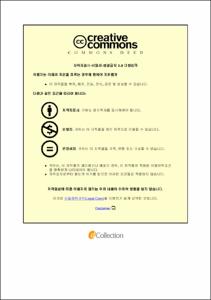동종조혈모세포이식 후 재발한 급성골수성백혈병 환자에서 고강도 구제항암요법 후 과립구집락자극인자 가동 공여자백혈구주입 연구
- Alternative Title
- Granulocyte-colony stimulating factor mobilized donor leukocyte infusion following intensive salvage chemotherapy for patients with relapsed acute myeloid leukemia after allogeneic hematopoietic cell transplantation
- Abstract
- 연구배경: 동종 조혈모세포 이식 후 재발한 급성 골수성 백혈병의 경우 예후가 불량하며 현재까지 정립된 치료가 없다. 공여자 백혈구 주입술의 이식편 대 종양효과를 극대화하기 위해 항암요법 병합 등 다양한 처치가 시도되어왔다. 이에 본 연구에서는 동종 조혈모세포 이식 후 재발한 급성 골수성 백혈병 환자에서‘고강도 구제 항암요법 후 과립구 집락 자극인자 가동 공여자 백혈구 주입 (chemo-mDLI)’의 효과와 해당 치료에 반응이 좋은 환자군을 구별하기 위한 예후인자를 분석하고자 하였다.
연구 방법: 1997년부터 2023년 사이에 chemo-mDLI를 시행받은 동종 조혈모세포 이식 후 재발한 55명의 급성 골수성 백혈병 환자를 후향적으로 분석하였다. 완전 관해율, 생착률, 전체생존 및 무병생존율, 재발률과 비재발사망률, 이식편 대 숙주 반응의 발생과 정도를 분석하였고 각 결과에 영향을 미치는 예후 인자들을 분석하였다.
연구결과: 평가 가능한 44명의 환자 중 36명에서 완전 관해를 획득하였고 전체 환자 중 호중구와 혈소판 생착률은 각각 90.9%와 72.7%였다. 생존자의 추적기간의 중앙값은 4.8년으로, 31명의 환자에서 질병 재발 혹은 진행을 보였고 16명의 비재발사망을 포함하여 총 46명이 사망하였다. 2년간의 누적재발율은 51.2%, 비재발사망율은 27.3%, 전체 생존율은 27.9%였다. 전체 및 2-4등급 급성 이식편 대 숙주 질환 (GVHD)의 발생율은 각각 43.6%와 40%였으며 2년간 누적 만성 GVHD 발생율은 전체 38.2%, 중등도 이상은 20%로 확인되었다. Chemo-mDLI를 재발 후 초치료로 시행 받은 경우 이차 혹은 그 이상의 치료로 받은 경우보다 유의하게 높은 완전 관해율과 (71.1% vs 41.2%; P = 0.035) 긴 생존 (위험비 4.12, 95% 신뢰구간1.83-9.31; P = 0.001) 및 무병생존기간 (위험비 7.90, 95% 신뢰구간 2.09-29.87; P = 0.002)을 보였다. 이 외에도 재발 당시 낮은 골수내 아세포 비율 (<40%), 예후가 좋은 세포유전형, 3×106/kg 이상의 CD34+ 세포용량, 이식 전 완전 관해 획득여부가 긴 생존을 예측하는 예후인자로 확인되었다. 이식과 재발 사이의 기간이 길 경우 완전 관해율이 더 높은 경향을 보였다. 항암화학 요법의 경우 다른 요법에 비해 CME 혹은 AIE로 치료받은 군에서 낮은 재발율을 보였다.
연구결론: 동종 조혈모세포 이식 후 재발한 급성 골수성 백혈병에서 고강도 항암요법 후 과립구 집락 자극인자 가동 공여자 백혈구 주입은 높은 완전 관해율과 허용가능한 수준의 이식편 대 숙주반응 및 비재발사망률을 보였다. 특히 재발 이후 첫 치료일 때, 재발 시 질병 부담이 적을 때, 주입된 CD34+ 세포 용량이 높은 경우, 이식 전 완전 관해를 이룬 경우, 재발 당시 유전자형이 좋은 경우 더 양호한 결과를 보였다.|Background: The prognosis for relapsed acute myeloid leukemia (AML) following allogeneic hematopoietic cell transplantation (HCT) remains remarkably poor, with no established standard therapy. Donor lymphocyte infusion or second transplantation are potential options for relapsed AML after HCT, providing long-term remission to a limited subset of patients. In this study, we aimed to evaluate the treatment outcomes of granulocyte-colony stimulating factor (G-CSF) mobilized door leukocyte infusion after intensive chemotherapy (chemo-mDLI).
Methods: We conducted a retrospective analysis of 55 patients with AML who experienced relapse after allogeneic HCT and received chemo-mDLI between 1997 and 2023. We evaluated treatment outcomes including complete remission (CR) rate, overall survival (OS), leukemia-free survival (LFS), cumulative incidence of relapse or progression (CIR), non-relapse mortality (NRM), engraftment, and graft-versus-host disease (GVHD).
Results: Thirty-six of 55 patients (65.5%) achieved CR/CR with incomplete hematologic recovery after chemo-mDLI. After a median follow-up period of 4.8 years for surviving patients, 31 patients (56.4%) experienced disease relapse or progression and 46 patients (83.6%) died. The 2-year CIR was 51.2%, while NRM was 27.3%, resulting in an estimated median OS of 8.4 months (95% confidence interval [CI], 5.8–11.1 months). Neutrophil and platelet engraftment were attained in 90.9% and 72.7% of patients at a median of 12 and 15 days, respectively. The incidence of all grade and grade II-IV acute GVHD were 43.6% and 40.0%, and the 2-year incidence of total and moderate-to-severe chronic GVHD were 38.2% and 20.0%, respectively. Patients who received chemo-mDLI as an initial treatment for relapse showed significantly higher CR rate (71.1% vs 41.2%; P = 0.035), longer OS (median 10.2 months vs 2.2 months, adjusted hazard ratio [HR], 4.12; 95% CI, 1.83–9.31; P = 0.001) and longer LFS (median 8.8 months vs 2.5 months, adjusted HR, 7.90; 95% CI, 2.09–29.87; P = 0.002) compared to patients who received the therapy as second-line or more. Clinical factors predicting longer OS and LFS after chemo-mDLI were lower bone marrow blast percentage (< 40%), favorable cytogenetics at relapse, higher CD34+ cell dose (≥ 3×106/kg) and receiving prior HCT in remission. Longer post-HCT remission duration (> 5months) was associated with a higher CR rate compared to shorter CR duration (71.1% vs. 41.2%; P = 0.035). Regarding salvage chemotherapy regimens, treatment with cytarabine, mitoxantrone, and etoposide or cytarabine, idarubicin, and etoposide was associated with lower CIR (44.7% vs 87.5%, adjusted HR, 5.11; 95% CI, 1.61–16.20; P = 0.006) compared to other regimens.
Conclusion: In patients with relapsed AML after allogeneic HCT, G-CSF mobilized donor leukocyte infusion following intensive salvage chemotherapy demonstrated a high CR rate and induced durable remission in a subset of patients. Our findings suggest that chemo-mDLI is an effective therapeutic approach as initial therapy for relapsed AML after HCT, particularly in patients who had achieved CR at prior HCT with a lower leukemic burden at relapse.
- Issued Date
- 2024
- Awarded Date
- 2024-08
- Type
- Dissertation
- Alternative Author(s)
- Jinhee Han
- Affiliation
- 울산대학교
- Department
- 일반대학원 의학과
- Advisor
- 최은지
- Degree
- Master
- Publisher
- 울산대학교 일반대학원 의학과
- Language
- kor
- Rights
- 울산대학교 논문은 저작권에 의해 보호받습니다.
- Appears in Collections:
- Medicine > 1. Theses (Master)
- 파일 목록
-
-
Download
 200000805696.pdf
기타 데이터 / 1.44 MB / Adobe PDF
200000805696.pdf
기타 데이터 / 1.44 MB / Adobe PDF
-
Items in Repository are protected by copyright, with all rights reserved, unless otherwise indicated.